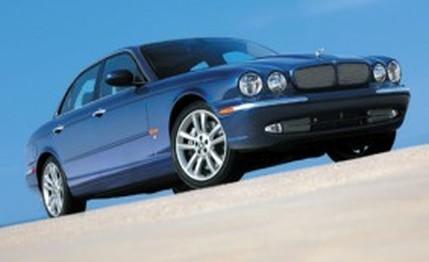
 First Drive Review
First Drive Review
Most new models put on weight. The makers justify these weight gains by pinning it on customers who consistently demand more and more features, electronic equipment, and safety devices. Jaguar's new XJ sedan, which should go on sale early next summer, is the slim-line exception. It is more spacious and luxurious than any XJ that has gone before, but versions of it can be lighter than its baby brother, the X-type.
The diet that has enabled the biggest cat to lose 440 pounds is aluminum. Jaguar isn't the first to make a premium sedan in aluminum; Audi did it six years ago with the A8. But Audi's was primarily an engineering exercise, and the A8 did not turn out to have a particularly low curb weight. In its new, second generation (see page 70), the all-wheel-drive A8 is actually heavier than the current Jaguar XJ.
Bob Dover, vice-president in charge of Jaguar, Aston Martin, and Land Rover for Ford's Premier Automotive Group, says: "People buy benefits, not technology." In the new Jaguar XJ, which should sell for a base price of about $60,000, the advantages are clear: higher performance, lower fuel consumption, or both.
The aluminum Jaguar grew out of necessity. Although the XJ has many virtues, packaging isn't one of them. It is significant that the EPA, which classifies cars by passenger-cabin volume, includes the current XJ as a "compact," along with the Chevy Cavalier, the Daewoo Lanos-and the Jaguar X-type. Buyers, swayed by emotion and carried along by Jaguar's style and driving quality, came to wonder why their car provided so little space inside and in the trunk.
Meeting that criticism while maintaining the style for what would be the seventh-generation XJ inevitably meant a bigger car, one that threatened to become heavier than a Mercedes S-class. That would mean more power and so on. The way to break this cycle of obesity was to think radical. An aluminum body could be 40 percent lighter than one of the same size and type in welded, pressed steel.
Jaguar garnered experience from within the Ford world as well as from aluminum suppliers Alcan and Alcoa to come up with a production system that is suitable for XJ volumes and uses as much existing tooling and equipment as possible. The new body shell is made from aluminum pressings, extrusions, and castings riveted and bonded together with epoxy adhesive. Welding is kept to a minimum. The outer pressed-aluminum panels are bolted to the hull for ease of repair.